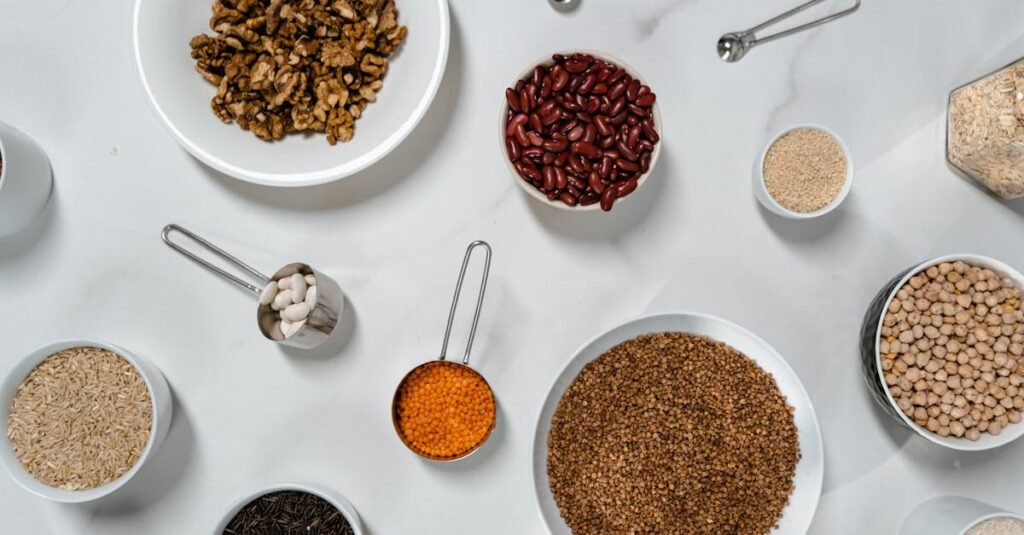Rinsing rice is a crucial step that many people overlook, but it can make a significant difference in the texture and flavor of your final dish. Whether you’re cooking basmati, jasmine, or any other type of rice, learning how to rinse it properly will help you achieve that perfect fluffy result. In this article, we’ll explore the steps involved in rinsing rice and why each step is important. You’ll also find an easy-to-follow table that summarizes the process, as well as answers to common questions about rinsing rice.
| Step | Description |
|---|---|
| 1 | Measure the Rice |
| 2 | Place Rice in a Bowl |
| 3 | Add Water |
| 4 | Swirl and Agitate |
| 5 | Drain the Water |
| 6 | Repeat the Rinsing |
| 7 | Final Drain |
Measure the Rice
The first step in rinsing rice is to measure out the amount you plan to cook. This allows you to use the appropriate amount of water during the rinsing process. Typically, a serving size is about 1/4 to 1/2 cup of dry rice per person, so adjust the quantity according to your needs. Remember, the type of rice may affect the cooking time and water ratio, so it’s essential to know what you’re working with.

Place Rice in a Bowl
Next, transfer the measured rice into a bowl. A large bowl is ideal as it allows ample space for the rice to be agitated without spilling. Using a bowl also helps contain the water when you begin rinsing, making cleanup easier. If you’re rinsing a large quantity, consider using a colander for better drainage.

Add Water
Pour enough water into the bowl to cover the rice completely. The water will help to wash away the excess starch that can cause the rice to become gummy or sticky. It’s important to use cold water at this stage, as hot water can begin cooking the rice, which we want to avoid until we’re ready to cook it.

Swirl and Agitate
With the rice submerged in water, use your hands to gently swirl and agitate the rice. This action helps to loosen the surface starch from the grains. Be gentle during this process, as you don’t want to break the rice. Swirling for about 30 seconds should be enough to remove a significant amount of starch.

Drain the Water
After swirling, it’s time to drain the water. If you’re using a bowl, carefully tilt it to pour out the water, or use a fine-mesh strainer or colander to avoid losing any rice. This step is crucial as it removes the cloudy water that contains the excess starch you’ve just washed away.

Repeat the Rinsing
To ensure all excess starch is removed, repeat the rinsing process at least two more times. Each time, you should notice that the water becomes clearer, indicating that you are successfully washing away the starch. This step can be adjusted based on personal preference; some people prefer to rinse more or less depending on how sticky they want their rice.

Final Drain
After the final rinse, drain the rice thoroughly. It’s important to remove as much water as possible before cooking, as excess water can alter the cooking time and texture of the rice. If you’re using a colander, allow the rice to sit for a minute to ensure all the water drains out.

FAQ
Why is rinsing rice important?
Rinsing rice is important because it removes excess surface starch, which can make the rice gummy and sticky during cooking. It also helps to remove any impurities or debris that may be present, leading to a cleaner and better-tasting dish.
How many times should I rinse rice?
It is generally recommended to rinse rice at least two to three times until the water runs clear. However, this can vary based on the type of rice and personal preference. Some people prefer to rinse more times for a fluffier texture.
Can I rinse rice in hot water?
No, it is not advisable to rinse rice in hot water as it can begin to cook the rice grains. Always use cold water for rinsing to ensure that the rice remains raw until you are ready to cook it.
Does rinsing rice change the cooking time?
Rinsing rice may not significantly change the cooking time, but it can help achieve the desired texture. If the rice is too wet after rinsing, it could slightly extend the cooking time, so be sure to drain it well.
References:
– [USDA Rice Cooking Guidelines](https://www.fsis.usda.gov/wps/portal/fsis/topics/food-safety-education/get-answers/food-safety-fact-sheets)
– [U.S. Rice Producers Association](https://www.usarice.com/)


